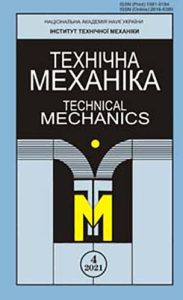The history of the Institute of Technical Mechanics of the National Academy of Sciences of Ukraine and the State Space Agency of Ukraine dates back to April 1966. Then, on the initiative of Academician Mykhailo Kuzmych Yangel, a new academic unit was founded in Dnipropetrovsk – the Sector for Problems in Technical Mechanics as a part of the Dnipropetrovsk branch of the Institute of Mechanics of the Academy of Sciences of the Ukrainian SSR. M. K. Yangel, as one of the originators of rocket engineering in the USSR, perfectly understood that the development of rocket and space technology should be based on the latest results of fundamental and applied research in the field of engine construction, heat and mass transfer and heat protection, aerodynamics and gas dynamics, the latest materials and technologies, strength and reliability, structural optimization, etc. Famous scientists were involved in the creation of the scientific institution: Corresponding member of the Academy of Sciences of the Ukrainian SSR and the USSR V. M. Kovtunenko, corresponding member of the Academy of Sciences of the Ukrainian SSR M. F. Gerasyuta, academician of the Academy of Sciences of the Ukrainian SSR V. I. Mossakovskii.
The next stage in the institute’s establishment was the transformation of the Sector in April 1968 into the Dnipropetrovsk Division of the Institute of Mechanics of the Academy of Sciences of the Ukrainian SSR. Vsevolod Arutyunovych Lazaryan, later an academician of the Academy of Sciences of the Ukrainian SSR, was appointed Head of the Division. The development of such a direction in the institution’s research structure as the dynamics of railway transport is associated with his name. In June 1968, the physics and metallurgy departments of the former Branch of the Kharkov Institute for Low Temperature Physics and Engineering of the Ukrainian SSR’s Academy of Sciences were joined to the Division, which contributed to an even greater expansion of the scope of scientific research.
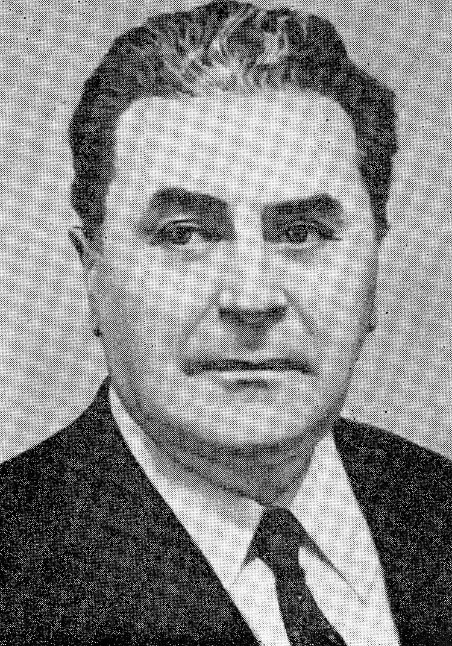
The scope of research at the Division grew from year to year, thus calling for the establishment of new departments. In February 1970, the research department of propulsion systems dynamics was established under the leadership of Viktor V. Pylypenko, D.Sc., with the task of augmenting the linear theory and devising a nonlinear theory of pogo self-oscillations of space vehicle structures, developing methods of dynamic characterization of liquid-propellant rocket engines and their components, and studying the dynamics of engine feed systems and transient regimes with consideration for cavitation in the centrifugal pumps with an inducer.
In 1973, the Sector for Problems in Space Engineering was structurally singled out at the Division. Until 1980, the sector was headed by Vasily S. Budnik, Academician of Ukrainian SSR’s Academy of Sciences.
In May 1980, the Division was transformed into the Institute of Technical Mechanics of the Ukrainian SSR’s Academy of Sciences, which was headed by the academician of the National Academy of Sciences of Ukraine Viktor V. Pylypenko, at that time a Corresponding Member of the Ukrainian SSR’s Academy of Sciences, D.Sc., Professor.

At the institute, a number of laboratories were organized and equipped with up-to-date testing facilities: hydrodynamics, plasmadynamics, vacuum and aerodynamic engineering, dynamic testing, strength, high energy, and electroforming; a controlled flow gas-dynamics system; a system to study detonation of solid-propellant rocket engines and gas generators; a high-pressure system for rocket nozzle testing, etc.



Gradually, a research structure was formed at the institute, which includes fundamental and applied developments in the following areas: mechanical and hydromechanical systems, launch vehicle systems, railway and road transport dynamics; aerothermogas dynamics of power plants, aircraft and space vehicles and their subsystems; strength, reliability and optimization of mechanical systems, launch vehicles and space vehicles; the interaction of a solid body mechanics with an ionized media and electromagnetic radiation; systematic analysis of trends and prospects for the development of rocket and space engineering.
The institute has developed experimental and testing equipment with unique capabilities, software, physical and mathematical simulations of processes that accompany objects of rocket and space technology at the stages of their delivery to the starting positions, launching into orbit, functioning in outer space and during entry into dense layers of the atmosphere when returning to the Earth. These scientific and technical developments contribute to the rise of domestic science and technology in the rocket and space industry to the level of the world achievements, and in some areas exceeds it.
Large-scale theoretical and experimental studies of the dynamics of cavitation phenomena in screw-centrifugal pumps of liquid rocket propulsion systems (LRPS) have been carried out, which have no analogues in the world in terms of their content and the novelty of the obtained results. These studies made it possible to obtain new ideas about dynamic processes in the LRPS and to create the scientific and technical foundations of a new original scientific direction in the field of dynamics of the LRPS and liquid launch vehicles.
Fundamental studies of the injection of inert and chemically reactive liquids and gases into a supersonic high-enthalpy gas flow have been conducted. The obtained results made it possible for the first time in the practice of rocket engineering to create fundamentally new highly efficient executive bodies of the rocket flight control system.
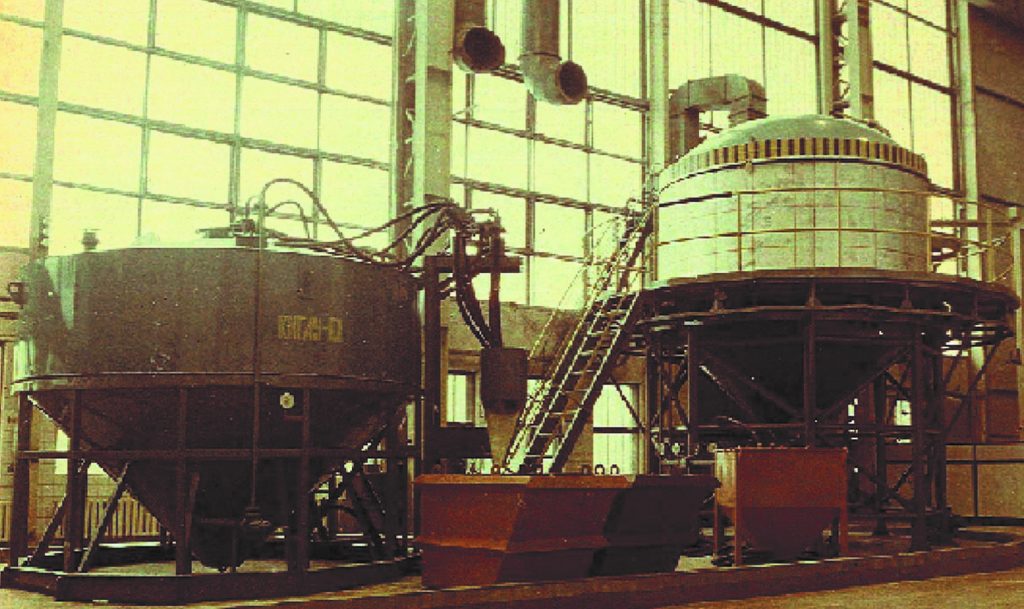
A significant place in the subject matter of the Institute is taken by works on the aerodynamics of launch vehicles, engines and spacecraft, as well as the interaction between spacecraft and the environment. Methods of numerical simulation of problems of aero-gas dynamics of aircraft at the stage of their entry into the atmosphere and during flight at a high supersonic speed have been developed. A complex of effects and phenomena characterizing the interaction between the spacecraft and the environment in the ionosphere and magnetosphere of the Earth has been studied.
From the very first days of the Institute’s establishment, research has been started in the field of aerodynamic support for the design and development of rocket and space technology. Currently, the aerodynamic direction at the Institute is represented by two scientific departments.
In the field of mechanical systems dynamics, effective methods of studying stationary and non-stationary oscillations of complex mechanical systems have been developed, methods of identification and optimization of their parameters have been proposed. Mathematical models and methods of ensuring the reliability and safety of railway transportation of structures, in particular space technology, forecasting and reduction of vibration load during transportation have been developed.
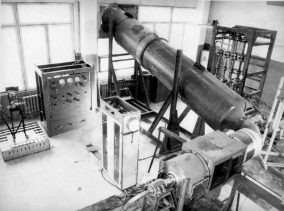
gas flow studies
The complex problems of deformation, strength and load-bearing capacity of heterogeneous structures of rocket-space and aircraft engineering, energy and transport engineering, operating in conditions of different physical nature, including local loads and contact interactions, have been investigated.
Effective complex methods to calculate the reliability and durability of space technology systems at the stages of design, development, manufacturing and operation have been developed. Probabilistic and statistical methods of designing complex technical systems have been developed.
Methods of technical and economic analysis of large systems have been developed, taking into account the uncertainties of the market economy.
The obtained research results are widely used in project development of rocket and space technology samples. They greatly contributed to the successful delivery and operation of the Zenit and Cyclone launch vehicles, the implementation of the Venus-Halley international project and other projects.
The institute has developed and experimentally researched fundamentally new pneumatic systems for the vehicle drivers vibration protection, as well as modern technologies: cavitation pulse hydroabrasive treatment of the metal product surfaces; application of heat-resistant and anti-corrosion coatings on products of the machine-building and metallurgical industries; manufacture of high-strength thin-walled structures of antenna-wave devices, radiation energy concentrators and other elements of complex configuration; burning of low-grade coal, etc.
A unique experimental base has been created for the study of hydrodynamic processes in the power systems of rocket propulsion systems, thermogas-dynamic and heat-mass exchange processes in power plants, simulation of aircraft flight conditions at high, medium and low altitudes, strength and vibration tests, technological processes of manufacturing elements of radio technical devices, solar concentrators using the method of electrolytic formation, etc.
New approaches to increase the efficiency of tactical missiles using detonation of rocket engines are being developed. The use of engines with detonation combustion of fuel allows to increase the speed and maneuverability of the rocket. At the created complex of 5 modern experimental stands, research is being carried out on devices with detonation fuel combustion at a modern level, taking into account the tasks of increasing the defense capability of Ukraine.
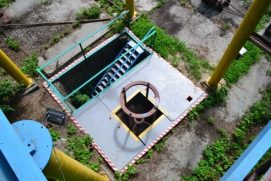
The scientific journal “Technical Mechanics” is published at the Institute.
Scientists of the Institute participate in the work of international societies and organizations, including the International Academy of Astronautics, the American Society of Mechanical Engineers, the International Society for Direct-Air Jet Engines, the German Society for Applied Mathematics and Mechanics, and the International Academy of Engineering.
According to the results of research conducted by scientists of the Institute since its creation, 89 monographs, 63 collections of scientific works, and more than 4,100 articles have been published. 794 copyright certificates and patents for inventions have been obtained. 28 doctoral theses and 187 candidate theses have been defended.
The works of the Institute’s scientists have been awarded: the State Prize of the USSR in the field of science and technology (V. V. Pylypenko, 1990); State prize of Ukraine in the field of science and technology (V. A. Lazaryan, 1971; V. K. Doroshkevich, 1985; M. D. Kovalenko, 1987; V. V. Pylypenko, V. P. Bass, V. Tymoshenko I., Shuvalov V. O. 1997; Hudramovych V. S. 1997; Pylypenko O. V. 2005); O. M. Dynnik Prize of the National Academy of Sciences of Ukraine (V. A. Lazaryan, 1978); S. P. Tymoshenko Prize (Hudramovych V. S. 2003); O. K. Antonov Prize (Kvasha Yu. O. 2004); M. K. Yangel Prize (Budnyk V. S. 1982; Pylypenko V. V. 1983; Zadontsev V. A., Grigoryev Yu. Ye., Manko I. K. 1989; Kovalenko M. D. 1991; Bass V. P., Tymoshenko V. I., Shuvalov V. O. 1994; Alpatov A. P., Hudramovych V. S., Pereverzev Y. S. 1997; Bogomaz G. I., Pylypenko O. V., Dovgotko M. I. 1998; Zavoloka O. M. 2002, Nikolaev O. D. 2016).
From 2003 till 2024 the institute was headed by Oleg V. Pylypenko, the academician of the NAS of Ukraine.


